We’re living in a golden age of innovation.
From artificial intelligence and machine learning to voice-enabled technology, the way we interact with technology is evolving right before our eyes.
In this article
- 1. Voice-Powered Technology
- Speech Recognition
- Smart Home Device Adoption
- Interactive Voice-Powered Web pages
- 2. Keyboard Accessibility
- Existing Accessible Keyboard Solutions
- Accessible Keyboard Breakthrough: Tap and Wearable Keyboards
- 3. ARIA Implementation
- 4. Screen Readers
- 5. Artificial Intelligence and Machine Learning
- 6. 3D Printing and Imaging
- 7. Multi-Line Braille Display
This revolution is impacting every industry, including one you may have never considered: accessible and adaptive technology.
Here, we interview two highly-decorated accessible technology experts who divulge their combined list of the innovations that are transforming lives within the disabled community.
Phil Kragnes is the manager of computer accommodations at the University of Minnesota in Minneapolis. He’s climbed three of the highest peaks in New Mexico, whitewater canoed and power lifted. Phil also lost his vision from diabetes in high school and is a double amputee below the knee. For over 20 years, he’s been educating the educators on best accessibility practices in adaptive technologies and the web.
Jared Smith is the associate director of WebAIM, a non-profit web accessibility consultancy based out of the Center for Persons with Disabilities at Utah State University in Logan, Utah. He has his Master’s Degree in Instructional Technology and has spent 20 years training thousands of developers around the world in web design, development and accessibility.
In this article, these experts will walk you through seven interesting advancements in accessible technology to show you where the industry is heading.
1. Voice-Powered Technology
The buzz-worthy topic that’s taken the world by storm, voice-powered technology.
Phil and Jared identified a few major voice-powered innovations impacting accessibility.
Speech Recognition
Speech recognition technology with a mobile device, computer or smart home device has been a real game-changer, Phil says.
He gives an interesting example.
“For someone with severe dyslexia, if they’re trying to write down three ideas and they can only speak (to their phone or smart home device), it will make sure all three ideas are jotted down. The ability to express one’s knowledge and understanding to a greater extent, that’s what speech recognition has done.”
Smart Home Device Adoption
Jared says he’s noticed the adoption of smart home devices is rising within the disabled community.
“These personal smart devices (Alexa, Google Home, etc), all of them are becoming the norm for people to interact with content. It’s incredibly powerful for people with disabilities.”
Interactive Voice-Powered Web pages
Jared also thinks we haven’t nearly begun to embrace the power of voice control with our standard laptop or desktop computers.
“Being able to interact with web pages via voice…there are technologies out there that kind of do it but we haven’t really seen the potential yet,” Jared says. “Web pages interacting with end-users with voice technology is another interesting area.”
2. Keyboard Accessibility
Keyboard accessibility is a vital component of web accessibility.
Many users are blind, have motor disabilities, tremors, little or no use of their hands or don’t have hands, must still rely on a keyboard for web navigation and to access content.
Jared Smith and his team at WebAIM produce comprehensive surveys of the disabled community on multiple web accessibility issues, including keyboard accessibility.
Lack of keyboard accessibility was ranked fifth in the list of most problematic accessibility items to disabled users in an October 2017 WebAim survey of over 1,000 participants. Approximately 11% (10.9%) of respondents with disabilities said keyboard accessibility was their single most problematic area.
Existing Accessible Keyboard Solutions
Typically, disabled users use one of the following keyboards:
IntelliKeys: An extremely versatile keyboard that allows a range of custom keyboard layouts that the user can print out.
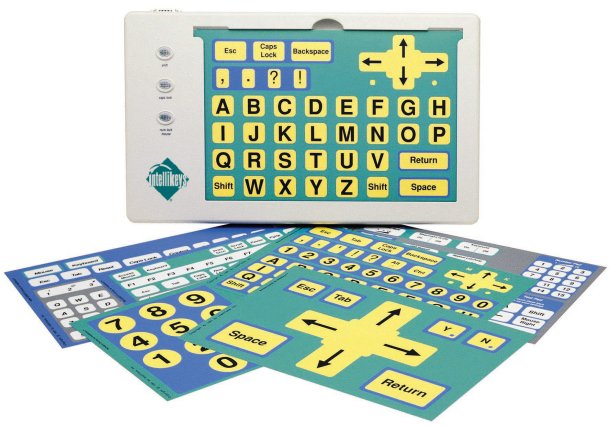
Keyguard: The simplest solution for users who want a standard keyboard but struggle to hit the keys accurately. A keyguard slides overtop of the keyboard it was designed for and makes it impossible to press multiple keys at once. The user can also rest their hands and arms on the guard without activating any keys.
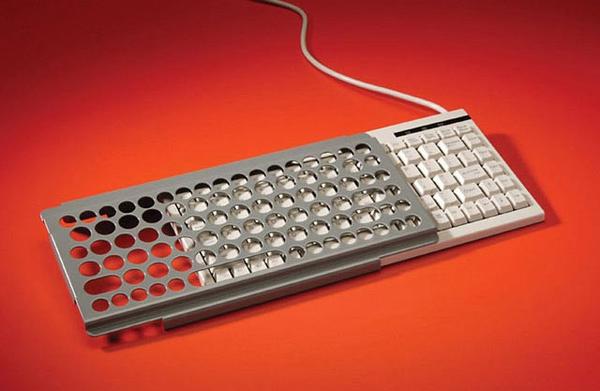
BigKeys: Very similar to a standard keyboard, except as the name suggests, with much larger keys. The keys are typically around one inch and very clearly labeled with text eleven times bigger than a regular keyboard. It’s a keyboard that’s popular with users with visual impairment and cognitive disabilities.
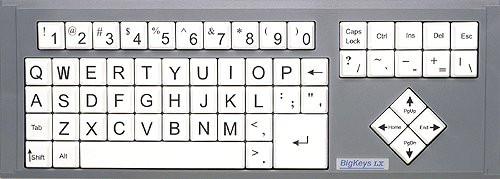
Compact Keyboard: A small keyboard that can fit into a tight space on a desk or wheelchair tray.
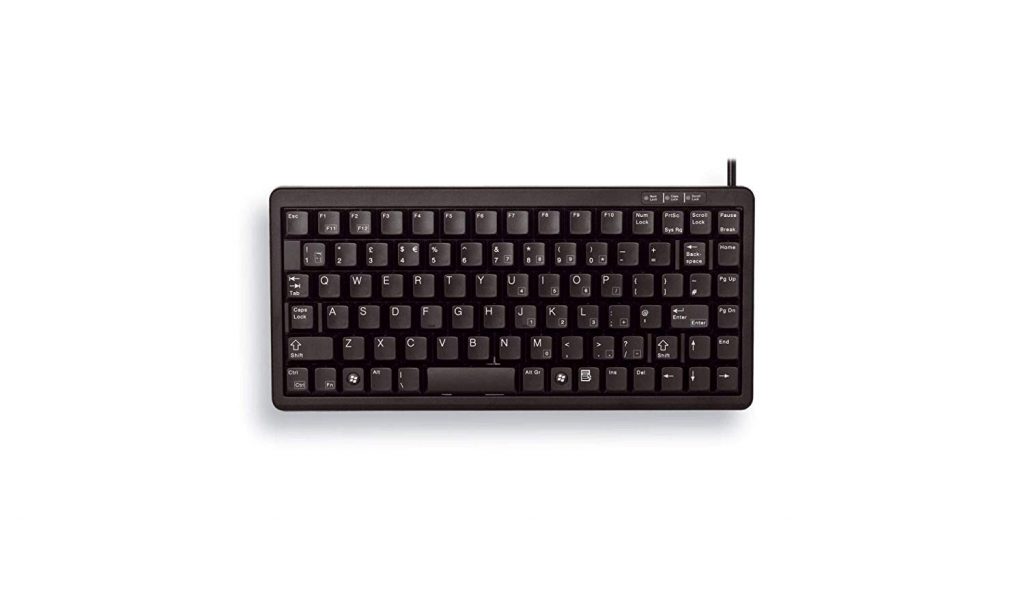
KidGlove: Color-coded and very easy to identify keys for those with visual impairments or cognitive disabilities.
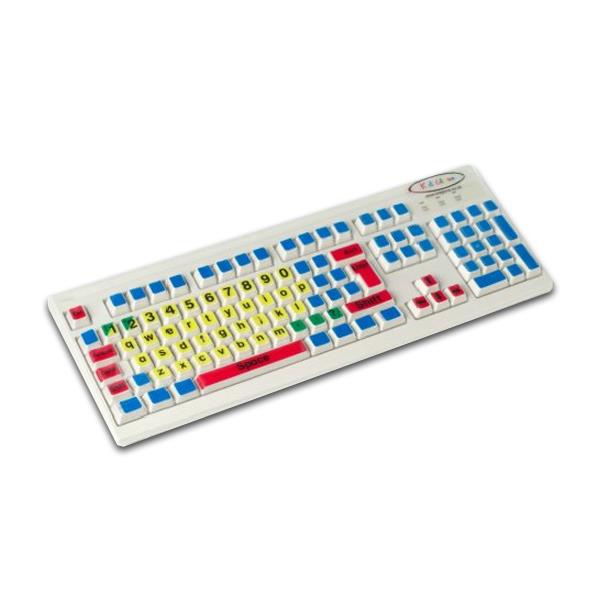
On-Screen Keyboard: A non-physical keyboard for those who can’t access a standard or accessible keyboard. Some can be accessed by a mouse, switch or eye gaze.
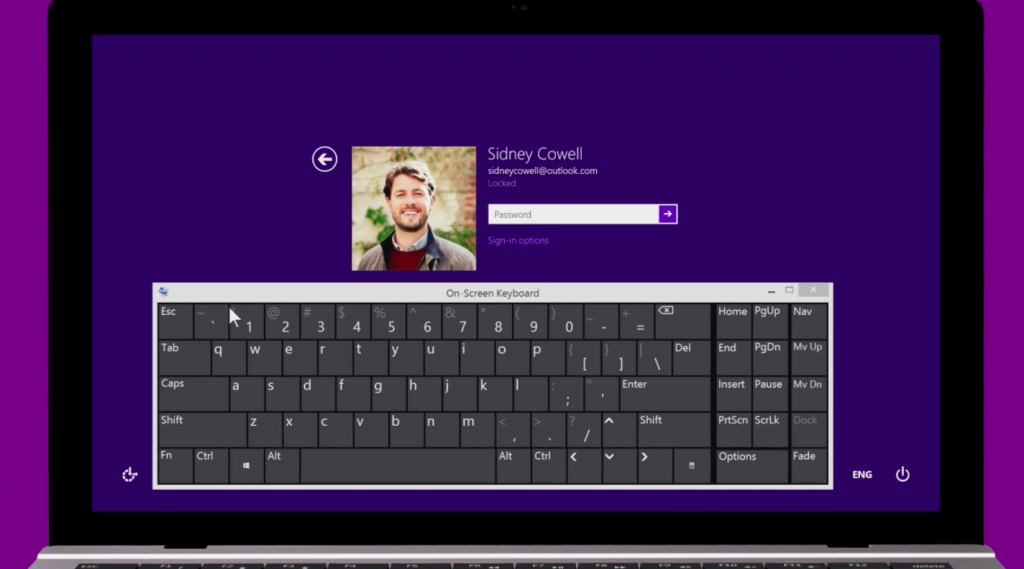
Accessible Keyboard Breakthrough: Tap and Wearable Keyboards
Recent developments have added yet another incredible and versatile option for those seeking an accessible keyboard: A tap keyboard fits around the user’s fingers, which is connected through five rings and only requires limited finger movement and the use of one hand. Tap keyboards transform any surface into a keyboard you can ‘type’ on.
The company leading the charge with the innovation is Tap, who crowdfunded the wearable, brass knuckle-esque keyboard.
Phil Kragnes thinks tap keyboards are “pretty cool” and much safer for disabled users with limited arm or hand mobility.
“Someone who only has the use of one hand, that’s a much more proper ergonomic option than a one-handed keyboard (which he refuses to recommend to clients at the university, because of the risk of damaging their remaining hand),” Phil says.
“These [tap keyboards] have really exciting possibilities,” he adds.
3. ARIA Implementation
Another interesting accessible tech trend has been with the ongoing implementation of ARIA or Accessible Rich Internet Applications.
ARIA is a set of attributes that help make web content and applications more accessible. It’s particularly useful in making dynamic content and advanced pages easy to use for people with disabilities.
Jared says in the few years since ARIA has been developed, it’s been shown how widgets, controls and HTML can be extended to provide a more accessible experience on a webpage or app.
The unfortunate part, and Jared and Phil both agree, is that ARIA is implemented incorrectly more often than not, and, when applied incorrectly, can actually make the site’s accessibility worse.
“It’s being misused just because of lack of awareness and lack of testing. Its overuse, misuse and abuse are in many ways making web content less accessible. It’s been interesting for someone like myself, who does this for a living and is passionate about accessibility and sees the potential, to see how it’s [actually] been adopted,” Jared says.
Jared says the secret in unleashing ARIA’s full potential lies in following ARIA specifications and using the markup and code correctly. Overloading the page with extra ARIA HTML content leads to a very laggy user experience.
“Instead of building good foundational HTML content, they [developers and webmasters] just load all of this extra stuff [in ARIA] on top of it. It’s not a very good experience for screen reader users,” Jared says.
4. Screen Readers
A screen reader is a software that’s integrated directly into a computer’s operating system (Mac, iOS devices, Windows, etc). The screen reader converts text-to-speech and provides a computerized voice over that scans and reads web pages for the user.
JAWS by Freedom Scientific, NVDA by NV Access and VoiceOver by Apple are the three most popular screen readers.
“The advancement in screen reader technology has been more impactful for blind users than anything we’ve done on the development and design side,” Jared says. “These technologies are really getting better all the time. Especially for their support for things like ARIA and dynamic content.”
Jared noted a lot of major internet browsers are releasing much more screen reader-friendly updates that better interact with and communicate with those users.
In their October 2017 survey, WebAIM found that Firefox (41%) and Internet Explorer 11 (23.3%) are the leading browsers for screen readers, followed by Chrome (15.5%) and Safari (10.5%).
The most-used browser and screen reader combinations are:
- JAWS with Internet Explorer: 24.7%
- NVDA with FireFox: 23.6%
- JAWS with FireFox: 15.1%
- VoiceOver/macOS with Safari: 10.0%
- JAWS with Chrome: 6.5%
- NVDA with Chrome: 5.9%
- NVDA with Internet Explorer: 2.3%
- VoiceOver with Chrome: 1.4%
- Other combinations: 10.5%
“It doesn’t mean they’re perfect. We tend to view them as these archaic technologies but they’re [getting increasingly] powerful,” Jared says.
5. Artificial Intelligence and Machine Learning
Artificial Intelligence and machine learning are being implemented in every industry at a rapid pace.
Jared says the implementation of these technologies is the topic that has him on the edge of his seat.
“It’s one of the big ones that I’m excited about,” he says.
One specific area Jared wants to see AI and machine learning address is in the evaluation and assessment of accessible technology, websites and apps. He says it would be incredibly powerful for AI to address where the gaps are, what issues need to be addressed and how to prioritize what to improve.
“If it [AI] could look at huge amounts of information and data across the web to find patterns and trends of accessibility so we can begin to prescribe solutions to those,” he says. “The next part of that is maybe machine learning and AI can start to fix some of those issues. We have enough knowledge about certain types of errors that always occur. But what if there were ways we could automatically address that?”
Essentially, what Jared is suggesting, is a way for AI and machine learning to self-regulate different accessibility criteria and standards for different platforms and correct them automatically, saving a lot of man-hours of manual updating by the webmaster or developer. The biggest byproduct of this kind of innovation is that the baseline of quality accessible web content would dramatically improve.
Machine learning is already being used on alternative text descriptions for images.
“There are limitations. We already have machines that can perform image analysis that can give us pretty good descriptions of what images look like but it’s not always [the best] alt text,” he says.
6. 3D Printing and Imaging
Much like AI and machine learning, 3D printing and imaging are being used for creating everything you could possibly imagine.
Phil says 3D printing and imaging has changed how someone with visual impairments understands a substance and how they learn.
“Once upon a time, if someone who was blind was taking a zoology class, a lot of time had to be taken to describe what a red blood cell looks like. Now, we just 3D print it and have them feel it to know what a red blood cell looks like. The technology is a benefit to everyone but has it accessibility uses as well,” he says.
This nonprofit in India is the latest to use 3D printing to specifically educate blind students to better understand their science courses.
7. Multi-Line Braille Display
For decades, braille has been communicated to those with visual impairments on a single horizontal line. That means there are limits to how much and what kind of information can be communicated to a blind reader at one time. Many advanced STEM, tabular mathematical information and also braille music are not able to be read by a singular line of braille.
Bristol Braille Technology, in Bristol, UK, has created a groundbreaking multi-line braille machine called the Canute. Dubbed the ‘Kindle for the blind,’ the radically affordable, multi-line braille e-reader can show nine lines of 40 characters (360 characters total). Most existing displays could do one line of 12-80 characters.
Phil says this technology will prove very useful to blind readers looking for work in very mathematic-heavy fields.
“If someone is blind and going into an engineering field or job with interactions with graphs, that technology is really evolving,” he says.
What do you think is the most interesting accessible innovation? Any that you’ll consider implementing after reading this? Let us know in the comment section below!
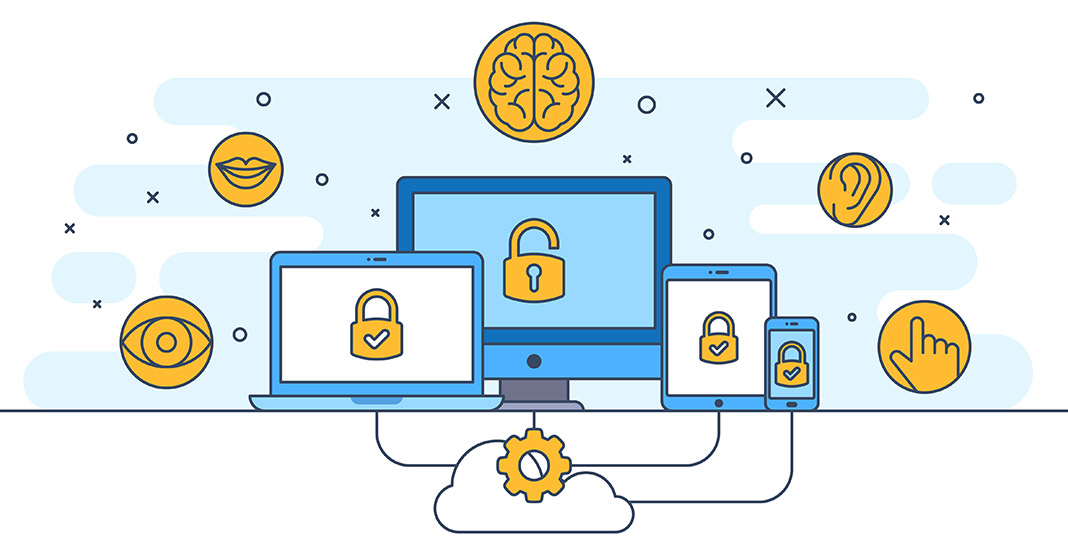
Comments
This is perfect!!!
this is perfect!!!
This is perfect!!!
This is perfect!!!!!